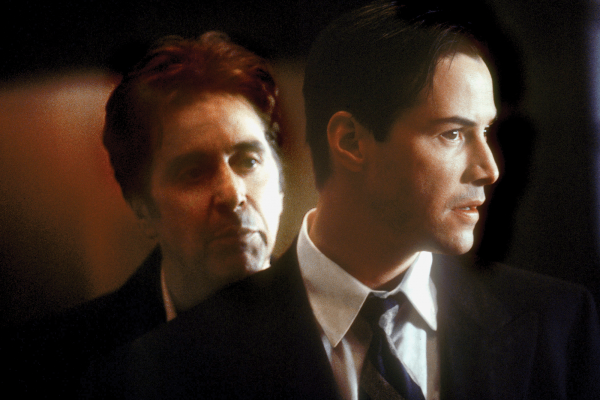THE DEVIL IS irresistible horror bait, the central figure in some of the best scary movies ever made. A tour through Satan’s oeuvre finds plenty of examples of an outside force of evil, such as Al Pacino’s diabolical attorney tempting Keanu Reeves in The Devil’s Advocate (1997) or Elizabeth Hurley’s sensual temptress raising hell for Brendan Fraser in Bedazzled (2000). These movies generally have the theological heft of a Carman music video, but occasionally, Hollywood tries an angle on Satan that’s a bit more sophisticated, spooky, and, ultimately, instructive. Take, for instance, John Carpenter’s low-budget 1987 box-office flop Prince of Darkness.
The movie follows professor Howard Birack (Victor Wong) and his students as they investigate a mysterious green ooze in a monastery’s basement. The team discovers that the slime is the literal embodiment of Satan, a twisted take on the consecrated host. While we get a brief glimpse of a giant red figure with black fingernails, Prince of Darkness doesn’t focus there. Instead, the danger is far more immediate. Anyone exposed to the slime is possessed by its essence, transformed into a mindless murderer. The true adversary remains in the shadows, sowing mistrust and division. The only thing our heroes can attack is each other.
Read the Full Article

